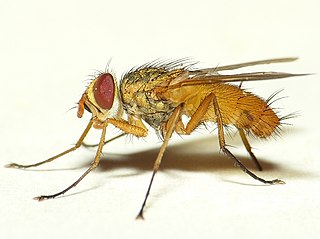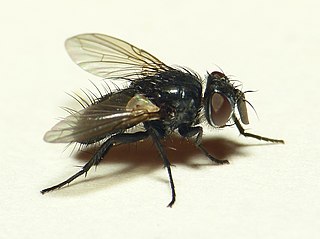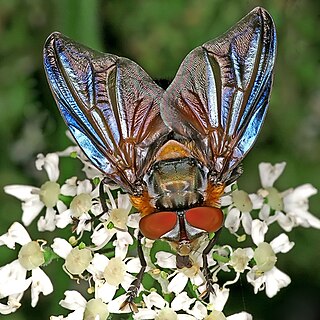Gynandromyia is a genus of flies in the family Tachinidae.
Glaurocara is a genus of flies in the family Tachinidae.
Metacemyia is a genus of flies in the family Tachinidae.

Siphona is a genus of flies in the family Tachinidae.

Thelaira is a genus of flies in the family Tachinidae.

Leskia is a genus of flies in the family Tachinidae.

Linnaemya is a genus of flies in the family Tachinidae.

Macquartia is a genus of flies in the family Tachinidae.
Microsoma exiguum is a species of fly in the family Tachinidae. It is a parasitoid of Sitona.

Exoristinae is a subfamily of flies in the family Tachinidae. Most species are parasitoids of caterpillars.

Blondeliini is a tribe of parasitic flies in the family Tachinidae. Larvae are parasitoids of other insects, mostly beetles and caterpillars. Although nearly cosmopolitan, its greatest diversity is in the New World and especially in South America.

Eryciini is a tribe of flies in the family Tachinidae.

Goniini is a tribe of parasitic flies in the family Tachinidae. Members of Goniini are distinguished from other Tachinidae by laying small "microtype" eggs that hatch only after being ingested by a host.

Phasiinae is a subfamily of flies in the family Tachinidae. Except for the small tribe Strongygastrini members of this subfamily attack only Heteroptera.
Euthera fascipennis is a species of fly in the family Tachinidae. Hosts include Halys dentatus, Apodiphus amygdali, and Dolycoris baccarum.

Tachininae is a subfamily of flies in the family Tachinidae.

Macquartiini is a tribe of flies in the family Tachinidae.
Periscepsia carbonaria is a species of fly in the family Tachinidae. Hosts are of the moth genus Agrotis.
Exorista rossica is a species of bristle fly in the family Tachinidae. It is a parasitoid of Acronicta megacephala, Euproctis chrysorrhoea, and Leucoma salicis moths.
Therobia leonidei is a species of fly in the family Tachinidae. It is a parasitoid of bushcrickets, including those from genera Poecilimon and Parapholidoptera.










